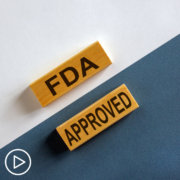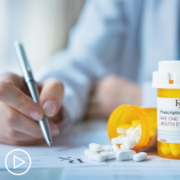How is Treatment Fitness Determined in Multiple Myeloma?
How is Treatment Fitness Determined in Multiple Myeloma? from Patient Empowerment Network on Vimeo.
How is treatment suitability assessed in myeloma care? Dr. Sikander Ailawadhi, an expert from Mayo Clinic, elaborates on the factors taken into account when determining the appropriateness of treatment for myeloma patients.
Download Guide | Descargar Guía
See More from START HERE Myeloma
Related Programs:

|

|

|
Transcript:
Lisa Hatfield:
Oh, great. Okay. Again, important to see a myeloma specialist to tease out all this information. Thank you. All right. This patient is asking, “I’m 81 and living with comorbidities. The myeloma was diagnosed after bone marrow test. How is treatment fitness determined?” And also a question about that is if you’re given an ECOG status of something you don’t like it, can that be improved after you’ve had treatment?
Dr. Sikander Ailawadhi:
Absolutely.
Lisa Hatfield:
Maybe be eligible for a trial or something.
Dr. Sikander Ailawadhi:
Correct. Correct. That is so important. When this patient mentioned that they’re 81-year-old and they’re living with comorbidities, I think, so when I’m talking to a patient who’s new to me, it’s very important for me to try to tease out what was their performance status or their fitness status prior to myeloma. Because my goal is to try to get them as close to that as possible.
Now if this patient is saying that they were already quite frail before the diagnosis of myeloma and myeloma is added to the frailty, then it becomes a little tricky because we’re starting in a difficult spot. We do determine fitness by asking questions, simple questions like, what can a patient do at baseline? Can they do grocery store or grocery shopping by themselves? Can they walk around the block? Do they get short of breath? Et cetera.
And frankly, there are 81-year-olds who are playing golf every day and are fitter than me. So I’m just saying that age by itself is not the criteria. And, Lisa, like you rightly mentioned, if there are fitness issues coming from the disease itself, then that’s the time that we actually have to work with the treatment, get the treatment started, and then assess the fitness a couple of months later, a couple of cycles later. Because the treatment may have worked and may have improved the fitness quite a bit.
Share Your Feedback:
Create your own user feedback survey




